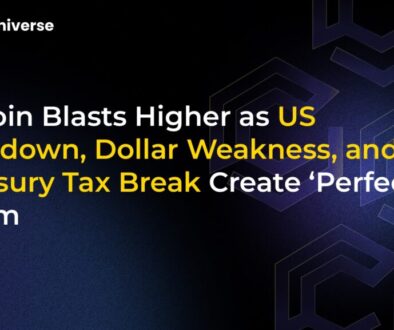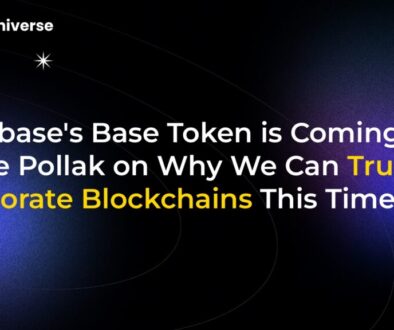The Rise and Fall of Yua Mikami Meme Coin: A Cautionary Tale

The Rise and Fall of Yua Mikami Meme Coin: A Cautionary Tale
The crypto world is no stranger to meteoric rises and dramatic falls, especially within the volatile meme coin sector. The story of MIKAMI, a meme coin linked to Japanese entertainment star Yua Mikami, serves as a stark reminder of this reality. Launched on May 8, 2025, the MIKAMI token experienced a devastating price crash of over 80% within hours, despite initial hype and a successful pre-sale that raised an impressive $3.4 million. Its value plummeted to a mere $0.1, leaving many early investors reeling.
This incident is not just about one coin’s failure; it’s a reflection of the broader challenges and risks inherent in the meme coin market, where tokens often lack intrinsic value and are highly susceptible to market manipulation and sentiment swings. Let’s delve into the factors that contributed to MIKAMI’s rapid downfall.
Unpacking the Crash: Flawed Tokenomics at the Core
A close examination of MIKAMI’s tokenomics reveals critical weaknesses that significantly contributed to its instability and subsequent collapse. Tokenomics, the science of a cryptocurrency’s economic model, including its supply, distribution, and utility, is fundamental to its long-term viability.
Liquidity Woes
One of the most glaring issues was the insufficient liquidity provision. Here’s a breakdown:
- Low Liquidity Allocation: Only 15% of the total token supply was allocated for liquidity. Low liquidity means that even relatively small sell-offs can drastically impact the price, as there aren’t enough buy orders to absorb the selling pressure.
- Pre-sale vs. Liquidity Pool Discrepancy: Data indicated that while 13.8 million tokens were sold during the pre-sale at a price of $0.245 each, only 10.35 million tokens were actually added to the liquidity pool. This imbalance likely exacerbated the selling pressure once trading went live.
This structural weakness made the MIKAMI token highly vulnerable to sharp price declines, especially when coupled with large sell orders shortly after launch.
Questionable Distribution
The distribution plan also raised red flags:
- Large Allocation to the Figurehead: A substantial 50% of the token supply was allocated to Yua Mikami herself. While these tokens were reportedly locked until 2069, signaling a long-term commitment, such a large, concentrated holding can still create market uncertainty.
- Presale Structure: 20% of the tokens were designated for the presale, distributed based on contributions in SOL (Solana). While presales can generate initial funding and buzz, they can also lead to immediate selling pressure if early investors look to cash out profits quickly.
The combination of weak tokenomics and insufficient liquidity created a perfect storm for MIKAMI’s dramatic price plunge.
The Double-Edged Sword: Celebrity Endorsement in Meme Coins
Yua Mikami’s involvement undoubtedly fueled the initial excitement around the MIKAMI coin. Celebrity endorsements have become a powerful, albeit risky, marketing tool in the cryptocurrency space, particularly for meme coins.
The allure is understandable. Celebrities can bring massive attention and a ready-made fanbase to a project. Psychologically, associating with a celebrity-backed coin can make investors feel like they are part of an exclusive community or tapping into the celebrity’s success. Figures like Elon Musk have demonstrated the profound impact a high-profile individual can have on market sentiment and investment flows into speculative assets.
MIKAMI: A Case Study in Celebrity Coin Risk
The MIKAMI coin’s trajectory highlights the significant dangers associated with celebrity-backed meme coins:
- Hype Over Substance: The initial $3.4 million pre-sale success was largely driven by the hype surrounding Yua Mikami, rather than any inherent value or utility of the token itself.
- Vulnerability to Manipulation: Celebrity endorsements can sometimes mask underlying issues or, in worst-case scenarios, be part of pump-and-dump schemes. While there’s no specific indication of this with MIKAMI, the general risk in the space is high. Influencers promote coins to inflate prices, only for early insiders or the promoters themselves to sell off, leaving later investors with significant losses.
- Diversion from Fundamentals: The focus on a celebrity can divert attention and investment away from projects with genuine use cases and sound fundamentals, potentially impacting the overall stability and credibility of the crypto ecosystem.
The MIKAMI crash underscores the critical need for investors to look beyond the glitz of celebrity endorsements and conduct thorough due diligence.
Broader Market Forces: More Than Just MIKAMI
While MIKAMI’s internal flaws were significant, its downfall was also influenced by broader market dynamics and external factors prevalent in the meme coin landscape.
Meme coins are, by their very nature, extraordinarily volatile. Their prices often fluctuate wildly based on social media trends, online community sentiment, and influencer narratives rather than traditional financial metrics. This inherent instability makes them high-risk investments.
A Market Already Shaky
The MIKAMI launch occurred at a time when the meme coin market had already experienced a significant downturn from its peak in late 2024. More broadly, both traditional stock markets and the cryptocurrency market as a whole had been facing volatility due to concerns about economic downturns and geopolitical tensions. Such an environment makes investors more risk-averse and prone to panic.
Panic Selling: The Final Nail
When the MIKAMI token’s price began to fall shortly after launch—due to its weak tokenomics and initial sell-offs—the broader market sentiment likely amplified the decline. Fear of missing out (FOMO) can quickly turn into fear of losing everything, leading to widespread panic selling. This cascade effect is common in thinly traded and highly speculative assets like many meme coins.
Lessons Learned: Navigating the Treacherous Meme Coin Waters
The rise and fall of the Yua Mikami meme coin is a potent cautionary tale for anyone interested in the crypto space, particularly the high-stakes world of meme coins. It highlights several key takeaways:
- Due Diligence is Non-Negotiable: Never invest based on hype or celebrity endorsement alone. Thoroughly investigate the project’s tokenomics, team (if identifiable), roadmap, and community.
- Understand Liquidity: Low liquidity is a major red flag. It can lead to extreme price volatility and difficulty exiting a position without significant loss.
- Be Wary of Unrealistic Promises: Meme coins often promise quick riches, but the reality is that most fail or are designed to benefit only a select few.
- Market Sentiment is Fickle: Social media hype can create temporary pumps, but sentiment can turn on a dime, leading to rapid crashes.
- Risk Management is Crucial: Only invest what you can afford to lose, especially in highly speculative assets like meme coins. Diversification, while not a guarantee against loss, can also help mitigate risk.
The MIKAMI saga underscores the speculative and often perilous nature of the meme coin market. While the allure of quick profits can be strong, investors must approach this corner of the crypto world with extreme caution, armed with knowledge and a healthy dose of skepticism.


